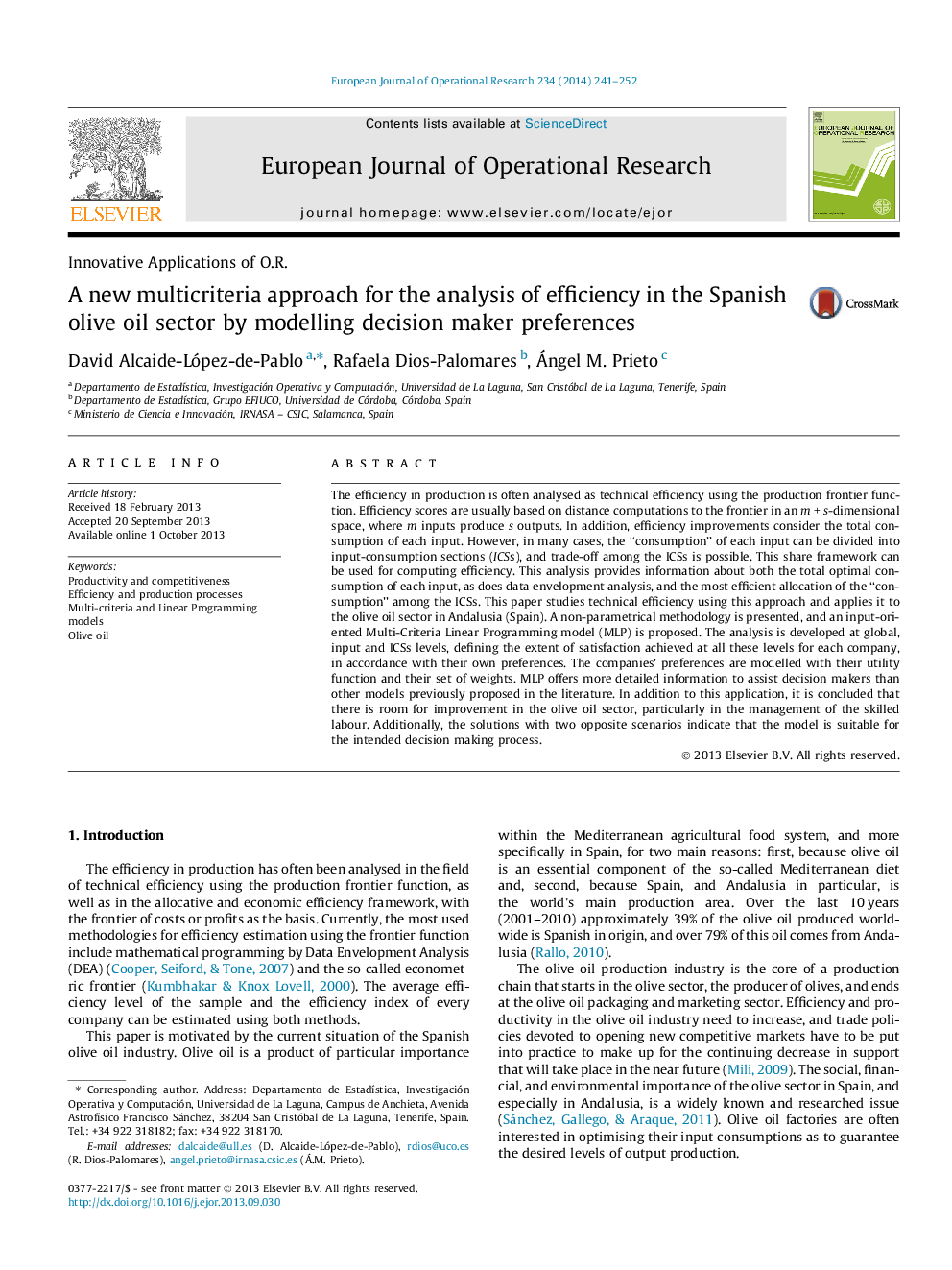| Article ID | Journal | Published Year | Pages | File Type |
|---|---|---|---|---|
| 479881 | European Journal of Operational Research | 2014 | 12 Pages |
•New model for production processes with input consumption divided into sections.•Efficiency scores are computed for every input and every input-consumption sections.•A Multi-criteria Linear Programming model is solved by a Utility Function Approach.•The approach estimates efficiency in accordance with decision makers’ preferences.•The existing Linear Programming software can be used to solve this model.
The efficiency in production is often analysed as technical efficiency using the production frontier function. Efficiency scores are usually based on distance computations to the frontier in an m + s-dimensional space, where m inputs produce s outputs. In addition, efficiency improvements consider the total consumption of each input. However, in many cases, the “consumption” of each input can be divided into input-consumption sections (ICSs), and trade-off among the ICSs is possible. This share framework can be used for computing efficiency. This analysis provides information about both the total optimal consumption of each input, as does data envelopment analysis, and the most efficient allocation of the “consumption” among the ICSs. This paper studies technical efficiency using this approach and applies it to the olive oil sector in Andalusia (Spain). A non-parametrical methodology is presented, and an input-oriented Multi-Criteria Linear Programming model (MLP) is proposed. The analysis is developed at global, input and ICSs levels, defining the extent of satisfaction achieved at all these levels for each company, in accordance with their own preferences. The companies’ preferences are modelled with their utility function and their set of weights. MLP offers more detailed information to assist decision makers than other models previously proposed in the literature. In addition to this application, it is concluded that there is room for improvement in the olive oil sector, particularly in the management of the skilled labour. Additionally, the solutions with two opposite scenarios indicate that the model is suitable for the intended decision making process.
